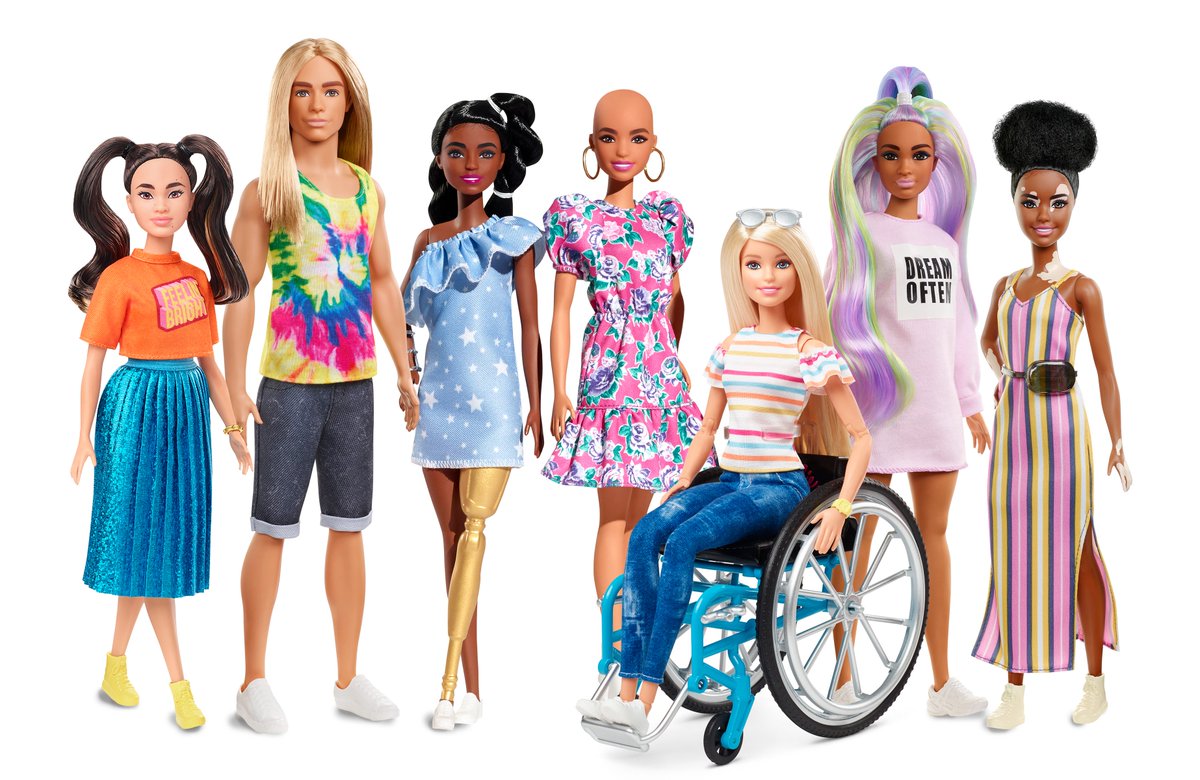Mattel adds more diverse Barbies, including dolls with vitiligo and alopecia

In October, Mattel introduced its career of the year doll, Judge Barbie. In addition to giving Barbie another career choice, Mattel has also shifted its focus to Barbie (and Ken’s) physical appearance. In September, the company released a gender-neutral doll. This week, Mattel continued that move of diversifying the bodies of one of the most popular and recognizable toys in the world. They introduced an expanded line that is meant to be more inclusive and representative of the people children see every day:
Barbie is branding itself as the “most diverse doll line” on the market after unveiling a slew of new dolls featuring inclusive hairstyles, skin tones and body types. Mattel on Tuesday revealed a doll with vitiligo, a doll with no hair, and a doll with a darker skin tone and a gold prosthetic limb.
According to Mattel, the maker of Barbie dolls, the Barbie Fashionistas line now includes 176 dolls with 8 body types, 35 skin tones and 94 hairstyles, “designed to reflect the world girls see today.”
“For 2020, Barbie is continuing the journey to represent global diversity and inclusivity in the fashion doll aisle by showcasing a multi-dimensional view of beauty and fashion,” a spokesperson for Mattel told CBS News.
To design the doll with vitiligo, an autoimmune condition that causes loss of skin color, Mattel said it worked with a dermatologist to ensure it was accurately represented.
“As we continue to redefine what it means to be a ‘Barbie’ or look like Barbie, offering a doll with vitiligo in our main doll line allows kids to play out even more stories they see in the world around them,” the spokesperson said.
Mattel also released a doll with no hair, which the company said is both meant to inspire girls experiencing hair loss for any reason and to reflect current hair trends. The release comes after Congresswoman Ayanna Pressley revealed this month that she has completely lost her hair due to the condition alopecia.
Last year, then-12-year-old disability activist Jordan Reeves collaborated with Mattel to introduce a doll with a prosthetic limb, which debuted alongside a doll with a wheelchair. Now, that doll will be sold with a darker complexion and a gold prosthetic leg.
[From CBS]
Mattel also introduced Joss, a doll who has hearing loss, and a Ken doll with long hair. In 2017, a doll wearing a hijab was released. I’m glad that Mattel is working to offer dolls that aren’t all tall, slender, leggy blondes with pale skin. I’m especially happy to see a slowly expanding group of dolls that live with various disabilities. I have friends who use wheelchairs, and I’m always glad when companies decide to offer dolls that use wheelchairs, but it has always frustrated me that often, companies stop there. While it would be impossible to offer a doll that represents people with every single illness, disability, or other condition, I always want to say, “There are children who live with disabilities that don’t require wheelchairs.” More children may have just found out what alopecia is because they saw Congresswoman Pressley take off her wig a couple of weeks ago, and so it will make sense to them to see a Barbie doll that doesn’t have hair. These dolls are a great way to start (or continue, I hope) positive conversations around different body types and different lived experiences.
— Barbie (@Barbie) January 28, 2020
Watch the Good Morning America reveal here: https://t.co/HlA1iQQoYd
— American Girl (@American_Girl) December 31, 2019
When @dollyparton calls, I answer. ?#barbie #barbiestyle
— Ayanna Pressley (@AyannaPressley) January 30, 2020
Source: Read Full Article
